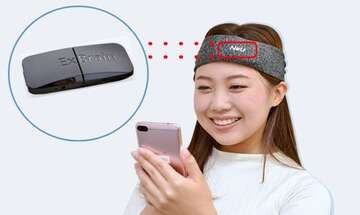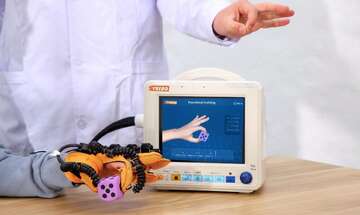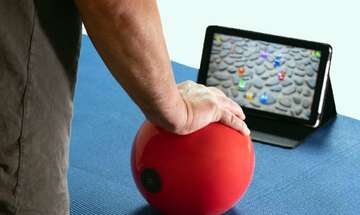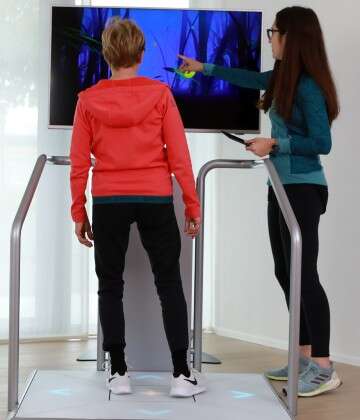Virtual Reality Therapy in Stroke Rehabilitation
 image: GESTURE TEK
image: GESTURE TEK Virtual reality training has proven benefits for stroke patients. Studies show that the use of VR devices in neurorehabilitation and physical therapy has a positive effect on the patients’ confidence, independence, and cognitive skills, and that it contributes significantly toward their physical rehabilitation.
Virtual reality therapy provides an inspiring environment for stroke patients, motivating them to exercise more than they would in traditional physical therapy, and to achieve better results in rehabilitation. At the same time, motion-activated interactive programs like those created by GestureTek provide stroke sufferers and other patients with disabilities with a sense of control of their environment and play a critical role in pain diversion. The sensory stimulation provided by interactive games increases the patients’ engagement and motivation.
GestureTek’s Interactive Rehabilitation and Exercise System (IREX) uses video gesture control technology to immerse patients into a virtual gaming environment where they can interact with various images and objects on the screen, and get auditory and visual feedback to keep them engaged and motivate them to keep exercising. Patients get guidance from clinicians, who can create fun, therapeutic exercise programs and regimes to address the patients’ needs in rehabilitation. The programs can test patients’ single joints, combined joint movements, or full body function.


The VR environments used in GestureTek systems are created specifically to facilitate rehabilitation in the exact manner prescribed by clinicians, and the systems themselves are completely gesture-controlled and touch-free. Patients do not need to use any special device or hold anything while exercising. Every therapy session is tracked through the Session Management Tool, a camera tracking technology that enables session reporting, which can be used to monitor the patient’s performance and progress.
A recent study published in Stroke magazine investigated the effects of virtual reality intervention on stroke patients’ brains and the ability to walk. The study looked at ten stroke survivors a year after the stroke, all of them with weakness on one side of their body. Five patients received no intervention and five underwent VR training for an hour a day, five days a week, over a period of one month.
Imaging studies of the brains of the patients who received the VR therapy revealed that all the patients showed improvement. Three interactive virtual exercise games used in the study were called Stepping Up Down, Sharkbait, and Snowboarding. The study showed that playing the games significantly improved motor function in stroke patients, indicating that virtual reality training may re-organize brain activation associated with recovering some walking ability. Previous studies showed that virtual reality therapy can produce measurable results and neuroplastic changes associated with improvement of motor skills in the limb that requires rehabilitation.
The exercises that can be performed using GestureTek’s technology and virtual environments can result in increased adherence to the rehabilitation program, improved mobility, balance, and trunk control, better fine and gross motor movement, enhanced executive functioning, pain diversion, and better cortical reorganization. Along with helping stroke patients regain their walking ability, GestureTek’s virtual reality therapy systems can also deliver therapeutic benefits to those suffering from traumatic brain injury, cerebral palsy, autism, and other conditions.
To see how GestureTek’s interactive games are used in rehabilitation, watch the video.

 SEND INQUIRY
SEND INQUIRY










